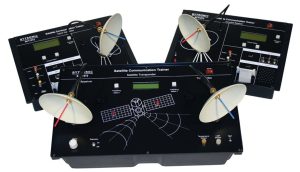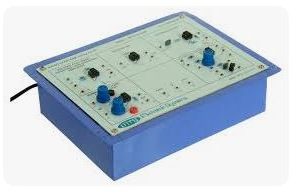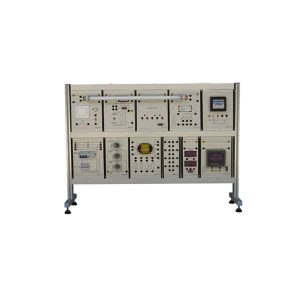Description
Features:
1. Self-contained solar cell trainer
2. Adjustable solar irradiation and azimuth for sunlight simulation
3. Equipped with DAQ is advantageous to acquire and save the experimental data
Specifications:
Solar Cell Base
1. Solar Cell Modules
(1) 4 pcs of monocrystalline silicon solar cell 6*12 cm
(2) Each solar cell unit:
a. Open circuit voltage (Voc): 0.55V
b. short circuit current (Isc): 2.3A
c. Maximum load voltage (Vpm): 0.5V
d. Maximum load current (Ipm): 2.2A
e. Maximum power (Ppm): 1.1W
f. Efficiency (Eff): 15%
2. Dimmer
(1) Adjust the brightness of halogen lamp:
a. Input voltage 110VAC or 220VAC
b. Output voltage 12V
3. Light Source
(1) Halogen lamp 12V / 50W
(2) Beam angle 60°
Solar Cell Module:
1. Digital Multimeter x 2
(1) DC Voltage: 400mV, 4V, 40V, auto range, Input resistance ≥ 10MΩ
(2) AC Voltage: 400mV, 4V, 40V, auto range, Input resistance ≥ 10MΩ
(3) DC Current: 400μA, 400mA,10A, push button selector switch
10A Range: 10A/250V fuse protected, mA/μA Ranges: 0.5A / 250V fuse protected
(4) AC Current: 400μA, 400mA,10A, push button selector switch, 10A Range: 10A/250V fuse protected, mA/μA Ranges: 0.5A/250V fuse protected
(5) Resistance: 400Ω, 4K Ω, 40K Ω, 4M Ω, 40M Ω, auto range
(6) Diode test: 0~1.5V
(7) Continuity: Buzzer for the measured resistance < 30 Ω
(8) Display: 3 ¾ digit LCD, max. indication 3999- 2. Energy Storage
(1) NiMH rechargeable battery 1.2V / 80mAh
(2) Super capacitor 10F / 2.7V
3. Load
(1) DC motor:
(2) Light bulb: 1.1V, 300mA
(3) Potentiometer: 100Ω, 10-turn
4. Inverter
(1) Input voltage: 2VDC
(2) Output:
a. Modified sine wave 1Vpp 50/60Hz
b. square wave 2Vpp 50/60Hz
Power Supply:
1. Input voltage 110/220 VAC
2. Output voltage 15VDC
DAQ with Software:
1. Channel 1 and 2: max. input voltage ±5V
2. Channel 3 and 4: max. input current 1A
3. DAQ type: Windows 10/11
4. System requirement
– (1) – PC: Intel Core i5 (13th Generation or above) processor, 16GB RAM, 1TB HDD, 512GB SSD, 19 Inch Monitor, Keyboard and Mouse.
(2) OS: Windows 10/11
List of Experiments:
1. Measuring the irradiation of various light sources
2. Energy conversion of solar cells
3. Diode characteristic of a solar cell
4. Effect of light-sensing area on the open-circuit voltage of solar cell
5. Effect of light-sensing area on the short-circuit current of solar cell
6. Effect of irradiation on open-circuit voltage and short-circuit current of solar cells
7. Relationship between the angle of irradiation and the short-circuit current of solar cell
8. Open-circuit voltage and short-circuit current of solar cells connected in series-shading
9. Open-circuit voltage and short-circuit current of solar cells connected in parallel-shading
10. I-V curve of solar cells
11. Conversion efficiency and Maximum Power Point (MPP)
12. Simulating a daily course of sunlight
13. Charging a capacitor with solar cells
14. Capacitor discharging
15. Constructing a solar power island system
16. Inverter
Accessories:
1. Test leads: 1 set
2. Experiment manual
3. Instructor’s manual
4. Basic solar power meter
(1) Operating with DAQ
(2) Measuring range 10~1200W/m²
5. 25% Shading plate
50% Shading plate
75% Shading plate
100% Shading plate
– Solar Power Meter
1. Display: 3 ½ digit LCD, max indication 1999
2 2 2. Measuring range: 2000 W/m, 634 Btu/ (ft x h)
2 2 3. Resolution: 0.1 W/m, 0.1 Btu/ (ft x h)
2 2 4. Accuracy: ±10 W/m, ±3 Btu/ (ft x h)
5. Sampling rate: 2 Hz






